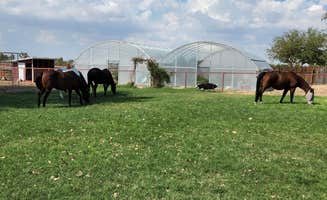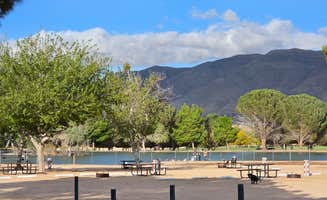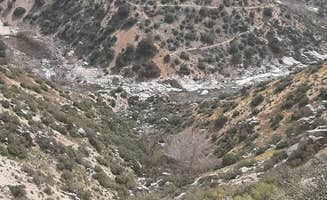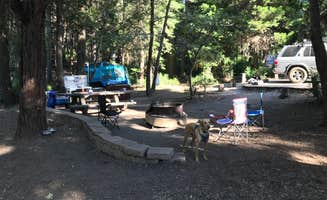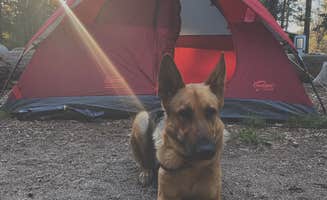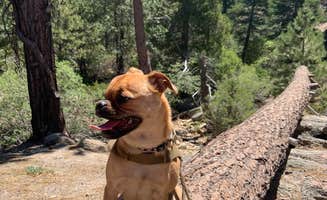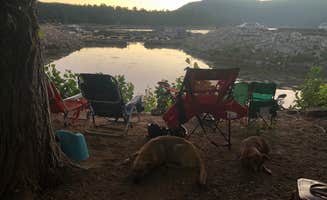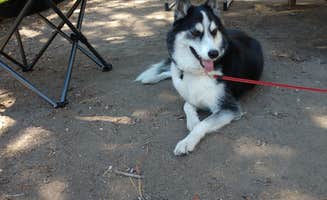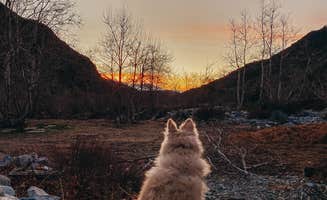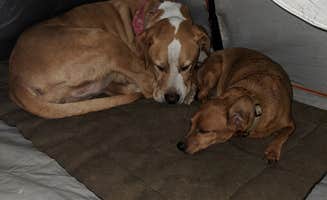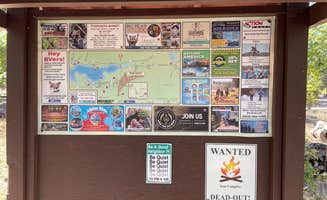The high desert area surrounding Apple Valley sits at approximately 3,000 feet elevation with seasonal temperature fluctuations from below freezing in winter to over 100°F in summer. The Mojave Desert terrain creates unique camping challenges with limited natural shade and occasional high winds affecting tent setups. Water conservation remains important at most campgrounds in this region, even those with hookup services.
What to do
Trail access from camp: At Dogwood Campground, multiple hiking paths connect directly to campsites. "Access to the Enchanted loop nature trail is at the back end of the camp and offers some great views," notes Jeremiah F. This trailhead provides moderate hiking options suitable for most skill levels.
Mountain biking opportunities: The areas around Serrano Campground offer extensive cycling options. "Beautiful, pristine campground with bike trails/walking paths around the lake. The town is bike friendly," explains Trey T. The paved campground roads connect to lakeside paths for riders of various skill levels.
Fishing access: Several campgrounds provide lake access for anglers, though specific regulations apply. "Fishing. Wide open spaces. Lots of birds," notes Rich J. about Mojave Narrows Regional Park. Seasonal stocking schedules affect catch rates, with early mornings typically offering the best fishing conditions.
What campers like
Natural shade coverage: Hanna Flat Campground stands out for its tree canopy. "Hanna Flat campgrounds are filled with lots of shade due to the big beautiful trees," reports Manny D. Sites vary in shade coverage, with waterfront locations typically receiving more afternoon sun exposure.
Space between sites: Campers appreciate the privacy at certain locations. "The sites are well spaced, good tree cover. Very nice patch of land," writes Andrew B. about North Shore Campground. Site spacing varies significantly between campgrounds, with primitive areas generally offering more separation than RV sections.
Wildlife viewing: Natural areas provide opportunities to observe desert wildlife. "Lots of birds. Fishing. Wide open spaces," mentions Rich J. Mojave Narrows. Morning and evening hours offer the best wildlife viewing opportunities, though campers should secure food properly due to small mammals throughout the area.
What you should know
Train noise considerations: Several campgrounds experience railroad noise, particularly those near Mojave Narrows. "The sites around Horseshoe Lake are close to an active rail line. And by active, I mean really active – I stopped counting after I counted 24 trains lumbering by during our short overnight stay," cautions Lee D. Selecting sites farther from tracks reduces noise impact.
Limited shower facilities: Deep Creek Hot Springs Campground provides basic amenities without luxury features. "Showers, pit toilet, running water, but it's $10 a night. Hardly any shade unless you get a good site," explains Jake P. Most campgrounds in the area offer similar basic facilities.
Seasonal weather preparation: Desert temperature fluctuations require appropriate planning. "Went in January with snowfall, hardly any campers and nature all around! Two nights are perfect," shares Kelly Anne M. about Deep Creek. Winter camping requires cold-weather gear while summer demands cooling solutions and extra water.
Tips for camping with families
Playground access: Mojave River Forks Regional Park offers family-friendly amenities. "There is a very nice playground in the day-use area, a reasonable walking distance from the Horseshoe Lake sites," notes one visitor. Most playgrounds remain accessible during regular park hours, though summer heat may limit midday use.
Bathroom proximity: When camping with children, bathroom location matters. "There were two restrooms about equidistant from our campsite, but both were very basic– no soap, hooks or shelves and no mirrors," reports Lee D. Families should pack hand sanitizer and portable lighting for nighttime bathroom trips.
Wildlife awareness: Teaching children about local wildlife creates educational opportunities. "The campground has the atmosphere of camping in the forest with a couple of hiking trails and lots of shade," shares Joanne about Dogwood Campground. Most campgrounds host squirrels, lizards, and birds, though larger wildlife remains less common.
Tips from RVers
Hook-up availability: Hesperia Lake Park and Campground offers partial connections. "Water and electric only on camp sites. No dump site there," explains James C. Most dog-friendly campgrounds near Apple Valley provide limited hookups, requiring planning for longer stays.
RV size limitations: Campground roads and sites restrict larger rigs at some locations. "I drive a 19 foot RV van which backed up easily into our campsite, and had plenty of room to spare," reports Shuree F. about their Dogwood Campground stay. Most campgrounds accommodate medium-sized RVs, though access roads may present challenges for larger vehicles.
Leveling requirements: Site grading varies significantly between and within campgrounds. "The first one we originally had was 3, super hilly and not leveled," reports Janae P. about North Shore Campground. Bringing leveling blocks helps manage uneven surfaces, especially at primitive or non-designated RV sites.


